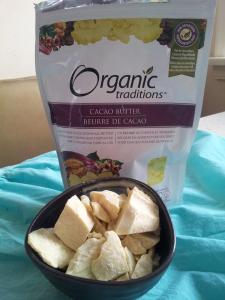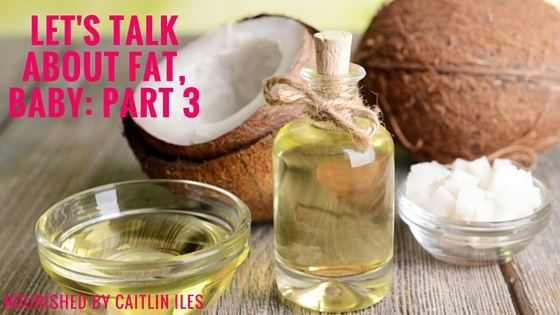Hello again friends!
As promised here’s the third and final instalment of my series on lovely, delicious, and nutritious fat! So without further ado let’s finish this bad boy off so we can move on to new and delightful topics.
Check out Part 1
Check out Part 2

Flora is an excellent brand dedicated to producing the highest quality foods and food grade supplements. They also make a great flax and omega oil. Most health food stores should carry their line.
Walnut Oil:
Great for: Dressings, any unheated preparations
Though slightly expensive, walnut oil has a delightful, nutty flavour and is great in cold food preparations. Since most of its fat content comes from omega-6 and omega-3 FAs, it should never be heated. As we’ve discussed, the omega oils are necessary for maintaining a proper inflammatory response in the body and are helpful in maintaining healthy brain function. In addition to these great fats, walnut oil also contains vitamins E and K.
Flax Oil:
Great for: Dressings, any unheated preparations
Like walnut and hemp oil, flax is made up of mostly omega-6 and omega-3 FAs, so it’s best used in cold preparations. Look for organic flax oil, stored in opaque jars in the fridge.

Organic Traditions is an excellent brand that specializes in super healthy, organic foods like cocoa butter. This brand can be eaten or used to make cosmetics
Camelina Oil:
Great for: Dressings, any unheated preparations
Camelina oil is made from a wild flax seed often cultivated in Saskatchewan. Though it is high in Omega-3 and -6 FAs, it has a much higher smoke point than other polyunsaturated oils, so it can be used in higher heat cooking. However, the flavour is so delicious, I prefer using it in raw preparations. This oil is great for promoting an anti-inflammatory state in the body, thanks to its high levels of omega-3 fats.
Cocoa Butter:
Great for: Making candies, putting in coffee
Cocoa butter contains saturated fat, mostly in the form of stearic and palmitic acid, which is necessary for building cell walls and providing the body with energy. Far from being the evil cause of heart disease, a meta-analysis conducted on 21 studies that looked at the connection between saturated fat and heart disease showed that it had no causative roll in the development of CHD, CVD, or stroke. (http://bit.ly/1aQmS7d) A far more likely culprit of these issues is chronic inflammation, which is associated with diets high in refined carbohydrates, inflammatory fats and oils (such as hydrogenated and trans fats, vegetable oils, and rancid polyunsaturated fats), and high levels of poorly managed stress. Phew… tangent over! Back to the health benefits. Cocoa butter also contains the monounsaturated fat, oleic acid, which is often found in olive oil and has actually been shown to have cardioprotective benefits! Finally, it is high in a compound called cocoa mass polyphenol (CMP), which from what I’ve gleaned from various studies and articles is an antioxidant that is protective against the formation of various cancer cells and again can help prevent CVD. This action is likely linked to its regulating effect on T-cells (an important part of your immune system) and can help lessen symptoms of immune-modulated body imbalances such as fibromyalgia, psoriasis, and chronic fatigue syndrome.
As a bonus, this delicious, fragrant fat is also great as a moisturizer thanks to vitamins C and E and helps prevent stretch marks during pregnancy when applied to daily to the skin.

I LOVE this butter from a small creamery in Manitoba. They also produce the Organic Meadows line of milk and kefir.
Organic/Grassfed Butter or Ghee:
Great for: High heat cooking, baking, or eating by the slice 😉
I’m not even sure where to start on grassfed butter, as it may be one of the most nutrient dense fats on this list. What I will start by saying is this: go to your refrigerator. If there is margarine in there, throw it out immediately. Go to the store and buy some grassfed or at least organic butter with which to replace it. Not only will your taste buds thank me, but so will your body. Like coconut oil, butter contains lauric acid, which has been shown to contain antiviral, antimicrobial, and antifungal properties when converted to monolaurin in the body. Butter is also a great source of fat soluble vitamins A,D, E, & K (and K2). There are many other delicious health benefits to butter, such as its short and medium chain fatty acids that have been shown to boost the immune system, but suffice it to say that adding you will never regret replacing your margarine with the real deal!
Animal Fat: From grassfed/organically raised animals:
Great for: Cooking
Animal fats have been much maligned in the past few decades as the cause of heart disease and a myriad of other health issues, typically due to their saturated fat content. However, as I mentioned above there has never been a study that has demonstrated unequivocally that saturated fat is the culprit behind these issues. Saturated fat is necessary for building healthy cell walls, providing energy for the body, and many of them actually have antiviral, antibacterial, and antifungal effects in the body. It also bears mentioning that animals raised on pasture or on diets natural to their species (that means omnivorous chickens and pigs, ruminant cows, bison, and sheep) actually contain quite a bit of omega-3 and omega-6 fats, the darlings of the health food world. Where we tend to get in trouble with animal fat is when we buy meat, etc. that comes from animals raised on unnatural diets, who live in cramped conditions, and are pumped full of steroids, antibiotics, and growth hormones. In these unhealthy animals, many of the toxins get stored in their fat, which we then end up ingesting. So stick to high quality meats and poultry as much as possible 🙂
Well there you go folks! This guide to healthy fats and oils should have you on your way to cooking and eating in the healthiest possible way. Have a wonderfully whimsical day!
Cait 🙂




Nice article! I thought it was filled with great information. if you found it interesting you may want to check this out as well.
http://ashleynbrown.ExperienceBA.com